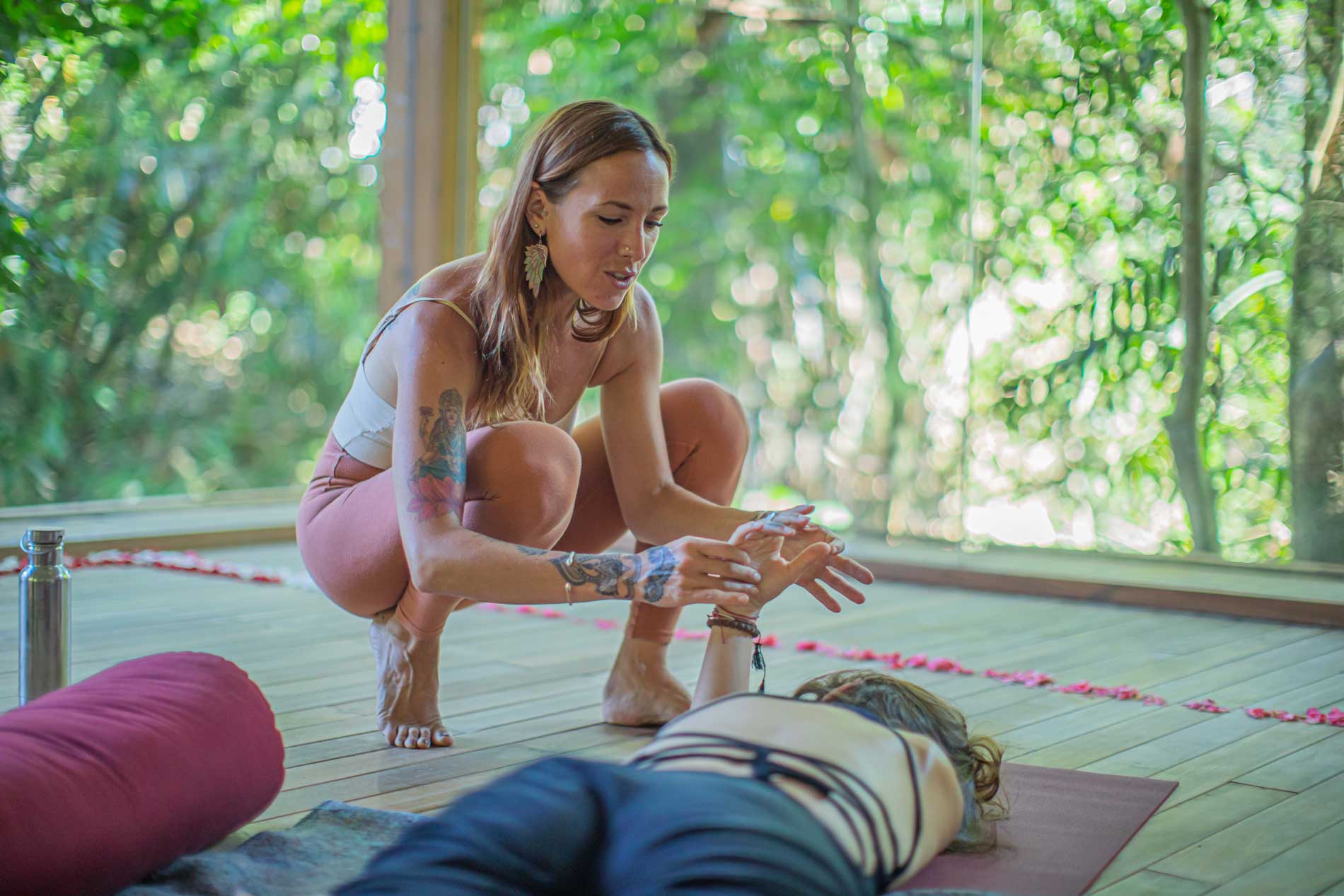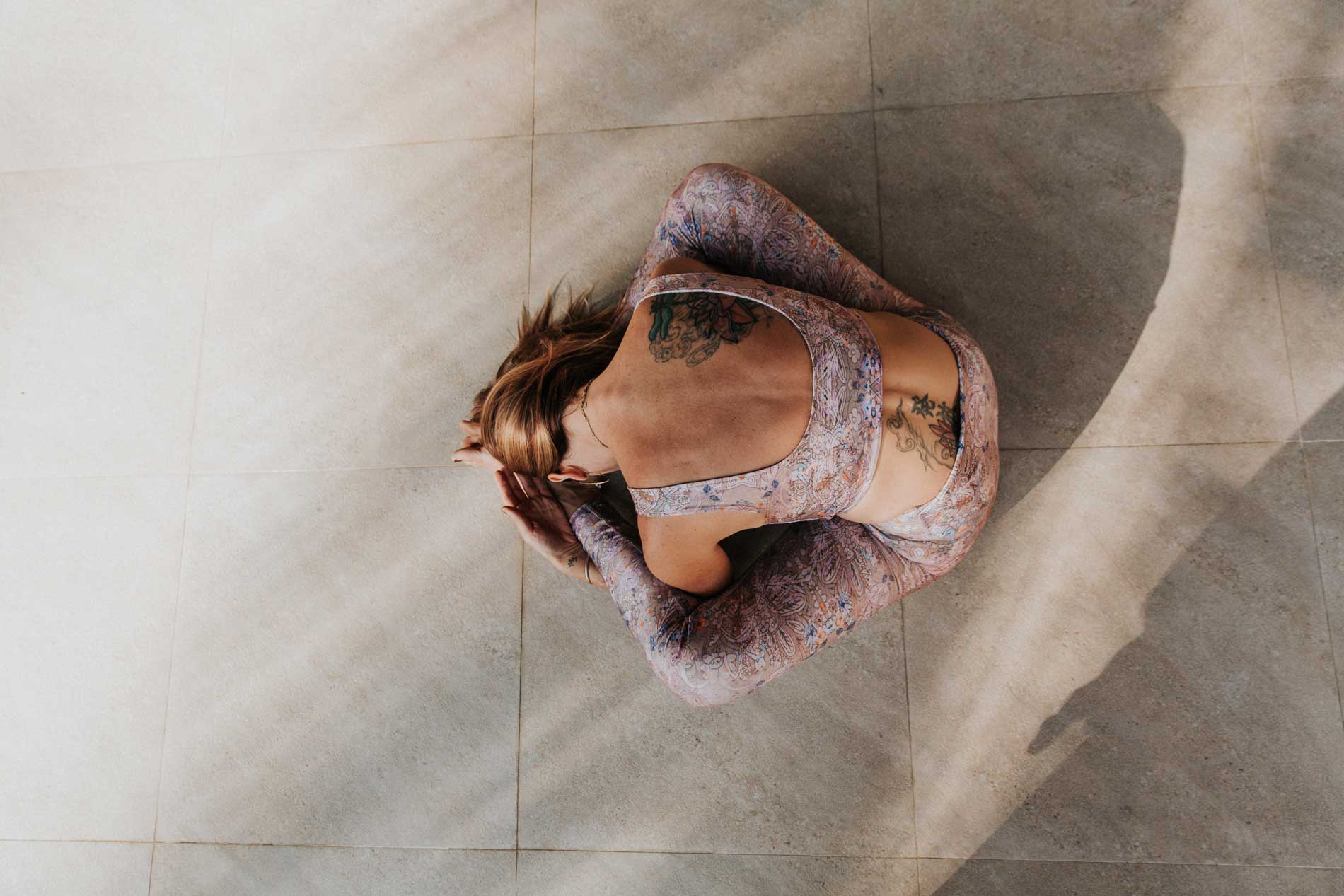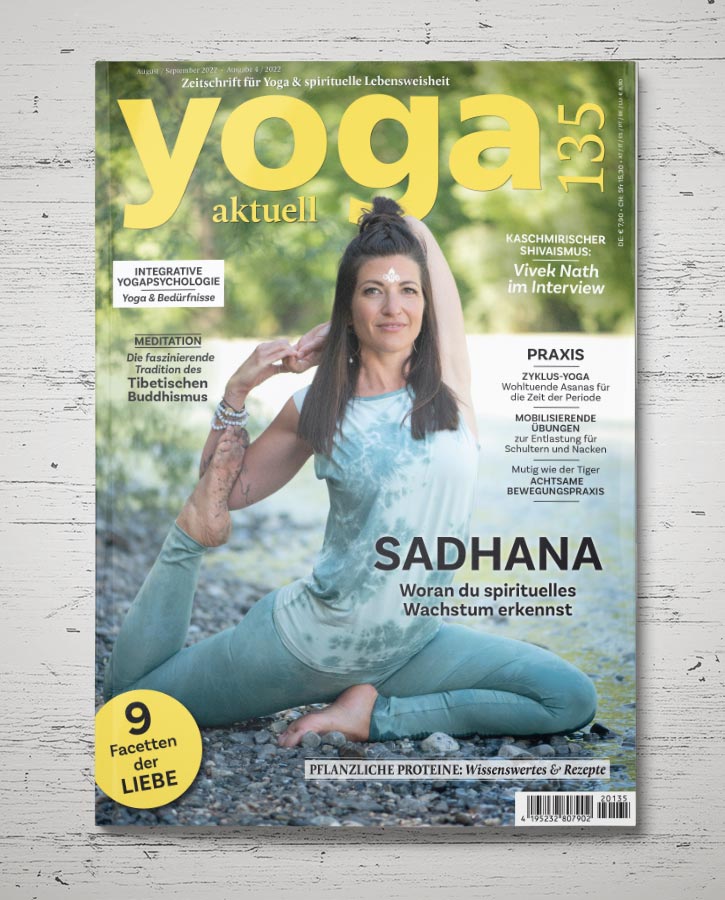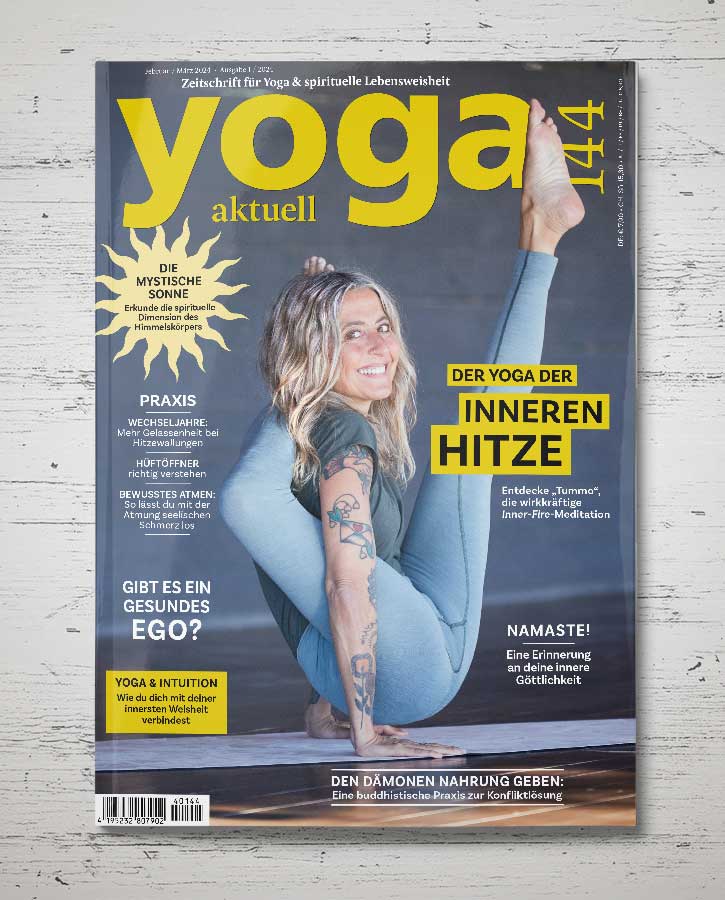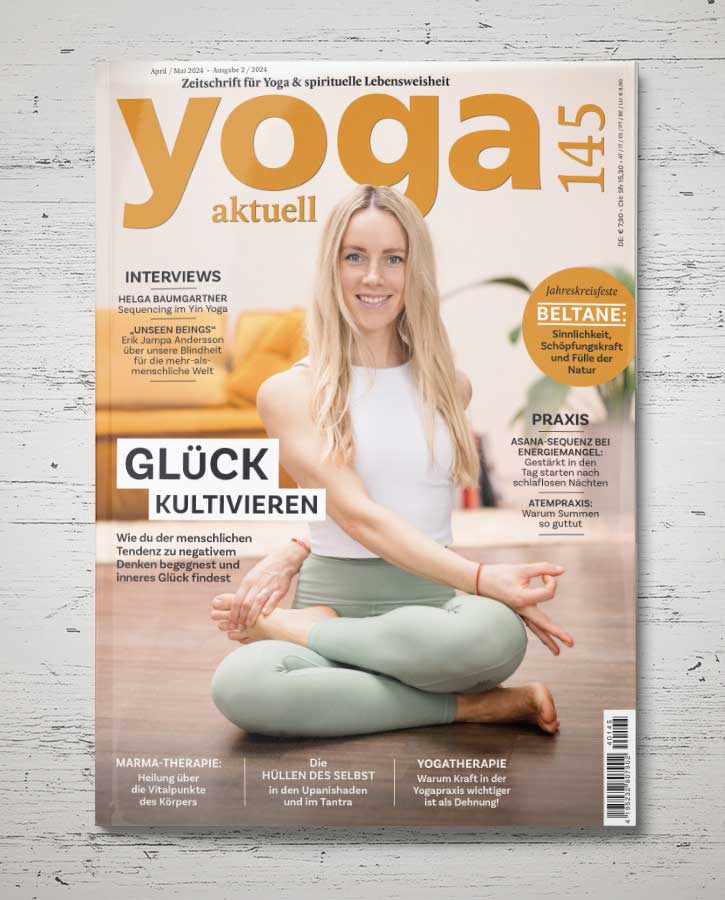As human beings we are story-making beings, stories help us make sense of the world we live in, stories help us connect and understand the interconnectedness of all things. Many stories from the Indian heritage as well as from our own cultural upbringing hold multiple meanings – they are great containers for the deeper mysteries of life.
Canadian-born Persia Juliet attended her first yoga class when she was 16 years old. After she graduated from her first teacher training in 2005, she started teaching yoga full-time the very next day. She consciously added storytelling to her own teaching style when she went through a difficult time in her own life and she now considers stories and storytelling as integral tools of yoga knowledge: Because a good story expands a personal experience into a universal dimension.
In the interview we spoke about how stories can add yet another layer to our physical yoga practice. Persia gives tips as to how to share stories, she explains the difference of storytelling in a Vinyasa setting in comparison to a yin yoga class and clarifies why stories help us understand essential truths.
INTERVIEW
YOGA AKTUELL: Persia, you’ve been sharing yoga full-time for 18 years now. And going to your classes, I know first-hand that they are very powerful as you’re known for your eloquence, how you use words, but also how you’re weaving in stories and mythology. When did you start adding these extra layers onto the physical practice?
Persia Juliet: I started adding mythology and storytelling to my teaching around eight years ago. It was a very specific moment for me. I had been dating someone mildly famous and well known in the community. While in hindsight I wasn’t in love; I was obsessed with him – let’s put it that way (laughing). I remember panicking before teaching a yoga class as we had only just broken up and I was deeply upset. I was asking myself, how can I be authentic without dumping my personal life into the yoga room?
I felt that I would be incongruent if I just went in and talked about postures. This was the first time where I decided to lean on my understanding of Vedic wisdom. I created a themed and sequenced class around the trimurti.
I was able to talk about how everything in life is a cycle. That there is always a beginning, a creation phase, Brahma. As a creation grows and evolves, we have to maintain, nurture and tend to it. This sustaining energy is Vishnu. If a Creation stays in Maintenance for too long, it can stagnate. When something ceases to keep evolving and fostering growth, it tends to dissolve, Shiva! If we ignore when something is stagnating or autopiloting, this is when Shiva comes in with a sword and this is when life feels very uncomfortable, you might receive shocking news and big unexpected challenges or a variety of obstacles.
During practice my language spoke about the beginning, the sweetness and excitement of the start. Then the building and we held postures with long holds and focus such as Warrior two. Then came the willingness to let go with a dissolving quality. Movements like reverse warrior melting back, moments of pause and breath letting go of what was. Ultimately arriving back into the flow to create again.
Can you tell that the class where you first incorporated storytelling felt any different from other classes?
What I noticed was that I was an emotional mess before that class. In my early days of teaching, I had a tendency to overshare personal information in yoga classes – and it got me into trouble (laughing).
This was my first experience of a multitude of people approaching me after class. With humble “thanks” each one of them said the same sentence: “I felt like you were speaking just to me the entire class!!!”
And that’s the power of storytelling, isn’t it? Stories can help us to understand essential truths. And they bring the yoga practice alive in everyday life and not just on the mat.
Absolutely. The students that shared were so diverse.
One was a business entrepreneur, his new project had just collapsed, and he’d lost a lot – a lot of money. He felt that my language was talking to his experience.
A woman I didn’t know shared with me that she had just lost her pregnancy and that she was coming to yoga for self-care. She also felt that the whole class had been crafted just for her.
Another student came up that was going through a divorce and the theme helped her to let go.
The symbology of the trimurti resonated with a variety of life experiences. As a teacher I could speak to it through my emotions and personal process without making the class about my personal life. This is what excites me about storytelling, myths and symbols. It’s a global language. The themes are timeless and everyone can find themselves in a story. One can speak with authenticity and the passion of life experience without adding a flavor of personal drama into the room.
That is very powerful: you’re sharing something that everyone can relate to and make their own associations with. As a teacher you feel different sharing such a class but the same is also true for the students. You’re part of a Yoga Teacher Training right now where you are teaching “yoga & storytelling”. How do you go about it, what are your tips?
If you are a new yoga teacher, I would gift yourself time before you introduce Myths and Story into your classes. Perhaps one to two years of teaching experience first. When you share stories in an artful way, you must understand the asanas deeply. Know how to speak to the body first and have the experience of maintaining the rhythm and pace of a yoga sequence in your body.
So if you could teach with your eyes closed right now, you’d be very ready to layer in storytelling. The reason for that is that it is cerebral, it’s cognitive. Unless you do it at a very good pace within a sequence, you can basically pull people out of their bodies and bring them up into their mind and then all sorts of things can happen – like injuries if a student dissociates from their body. In order to do storytelling well with yoga, it needs to be merged with physical cues and the appropriate timing of when and where to land parts of a story.
When it comes to storytelling in a yoga class, does it have to be a story or a myth that stems from the rich Indian heritage?
I would also say that stories and myths don’t have to come from India. I encourage every teacher to explore their own heritage and culture, also bringing in fairy tales for example. I think it’s helpful to share things that have a variety of characters so that there is room for students to connect to different parts of the myth or the story at different times.
But generally, in training when I teach storytelling, I keep it simple, and encourage newer teachers to find a poem or a quote and then start weaving themes that way.
How would you recommend teachers to go about weaving it in? Would you plant the seed of the story at the beginning of class, then you keep coming back to it throughout and eventually there’s a closing at the end?
Yeah, that’s a beautiful way of sharing. Obviously in the opening and the closing of a class you have more time. You have at least 5 minutes at the beginning, probably 5 minutes at the end. In the opening of a class, you’re kind of setting the soil to be fertile. It’s such an important time. If you can share a story that you know in your body, that you can open up your eyes as a teacher and look at people while you’re saying it and not read from a book or have to close your eyes, that really brings it to life. Also, choose at least a few postures or movement patterns that help to animate the story.
Would you have an example for us?
Just this week I did the Samudra-Mathana which translates to “ocean churn” in an English translation. It’s a gorgeous, long, long story about the churning of the milky ocean. In order to animate that sense of churning, I added a lot of revolving and twists through the torso. I also created a Mandala class so that we were turning and rotating around the yoga mat. This action spoke to the turning of the mountain in the cosmic ocean and then we turned all the way around again.
If you can have your sequence or asanas have some relevance to the story, I think that’s when it lands for students in this somatic way, not just up in the mind…
… And you’re really taking them on a journey…
Yes!
Is there actually a difference in weaving in stories in a yin yoga or a vinyasa yoga class?
Great question. Yin yoga is easier. Much easier because you have so much time. (laughing) As a Yin Yoga teacher you just need to cue a student into a pose and describe the target area. Yin Yoga is not focused so much on alignment or what the post looks like, it focuses on feeling and sensation or target area. Once you get a student in a pose, you have 3 to 5 minutes of space where you can animate a story with details, or you could share a question of reflection about the story.
And because Yin Yoga is all about what is deepest inside, it’s about introspection and reflection, it just works so beautifully. And not to tell people what the take-away of the story should be but to ask them questions of inquiry so the take-away is personal for them. That feels really important in all yoga teaching actually. (laughing)
And then for me with vinyasa I would say it’s a little more tricky and that once you get going with the flow and there’s a pace, it’s very easy to forget the story. That’s what I like to call a “sandwich theme”: you open the class with a juicy story, then the middle is just empty, and you end the class with a juicy story. I think however, it’s better if teachers aim to make more souffles or lasagnas (laughing). So it’s multilayered and they’re drip-feeding the story throughout the practice.
I feel that Vinyasa is a little more challenging, just as fun but it takes more of the teachers’ awareness.
What is it like as a teacher to incorporate storytelling into your teaching style?
It’s a very beautiful experience that adds color and texture to the human experience of life.
I remember, I once taught at a yoga studio that was quite conservative. They were concerned about sharing Sanskrit, Myths and stories for all sorts of reasons – amongst other things cultural appropriation came up. So for one year I stopped sharing any stories, I stopped using Sanskrit and to me it all felt so flat and bleak; like the soul or the life force went away from what I was sharing.
In the end I chose to leave the studio to have the freedom of sharing stories again.
Stories are a way to connect to our ancestors and they gift poetry to Asana.
I highly recommend sharing the source of the story however and giving due credit to the origin of the story too.
So when you were told not to use stories anymore, did you then start sharing more from your own personal life – as in oversharing – or did you just keep it flat like a workout kind of style yoga practice?
That is such a good question! Actually, I did start sharing personally and I remember one particular experience when a lady felt rather triggered by me. When I started to share, she took a big sigh and put her fingers in her ears. (laughing) When I stopped and we started doing yoga, she took her fingers out. When I then shared something again personally, she just stormed out of the room. And I was like wow.
It’s a fine line.
Personally, what brings me back to a yoga teacher is if there is something personal. Whether it’s how they translate a story or just something brief that’s about their life. It doesn’t involve a ton of detail or literal characters – like referencing “my partner” or “my mother.” But rather a sweetness of human connection. The door is open just enough that I’m letting you see the real me, the human being and I love this!
I still share personally but I’ve been moving more to myths and stories which really helped me to find the edge of what’s appropriate. It’s still a process and I’m continually refining the skill.
As a student you want to feel drawn to a teacher on a personal or an energetic level. And if a teacher shares from their own experience and boils it down to concepts and generalizations, people can apply it more readily to their own experiences. We all go through changes; we lose a job or a relationship. And as humankind we love stories because we want to be able to connect with each other. Right? What is your favorite story, Persia?
Well, I still love the Samudra-Mathana, that’s one of my favorites. But the one that really touches my heart strings is the story of Sati and Shiva falling in love and Sati dying by fire and being reborn as Parvati. That story, ooohhhh. It has brought me inspiration to keep going and it keeps teaching me the willingness to let go through so many situations.
It looks like the stories not only added more fine layers to your teaching style but that they’ve also enriched your own life…
100%! And as a teacher, you know, at least those yoga teachers in the West are human, we’re not gurus, we’re not living in ashrams or on mountains, we’re having complicated interactions. Whenever life gets a little bit more tricky or challenging, I will usually use a story, like Sati and Shiva, to help bring forward my energy but not to reveal the wobble that I might be currently navigating. So they become like family or friends.
For example, Ganesha has so many myths and stories and it’s such a beautiful one to bring it to the room because I feel that everyone can relate to Ganesha. Simply a whole class about embracing obstacles rather than always trying to clear them away, that’s profound and it impacts everyone.
I mean obstacle transcends everything: obstacle with you and your body, obstacle with work, obstacle with relationships, whatever it might be. There’s no limit and I think that is what is so exciting. And even if you just know one story, it has so many different facets to it that it will change every time you share it.
And that’s what I love about our ancient ancestors: it was all oral. It’s all oral tradition, nothing was written on the page which meant that it was fixed and unchanging. And that oral aspect turns it into a living and breathing organism.
I would encourage all teachers if you do want to share stories from a country that’s not your own to really give credit to where the story came from and really honor that.
But also, a way of giving credit to a story is to share it orally. Give it life force!
One of my favorite storytellers, his name is Martin Shaw, says: “A story written on a page is dead. Speak it. Give it life.” – which really resonated with me!
Yeah, so true. Thank you very much for sharing, Persia.
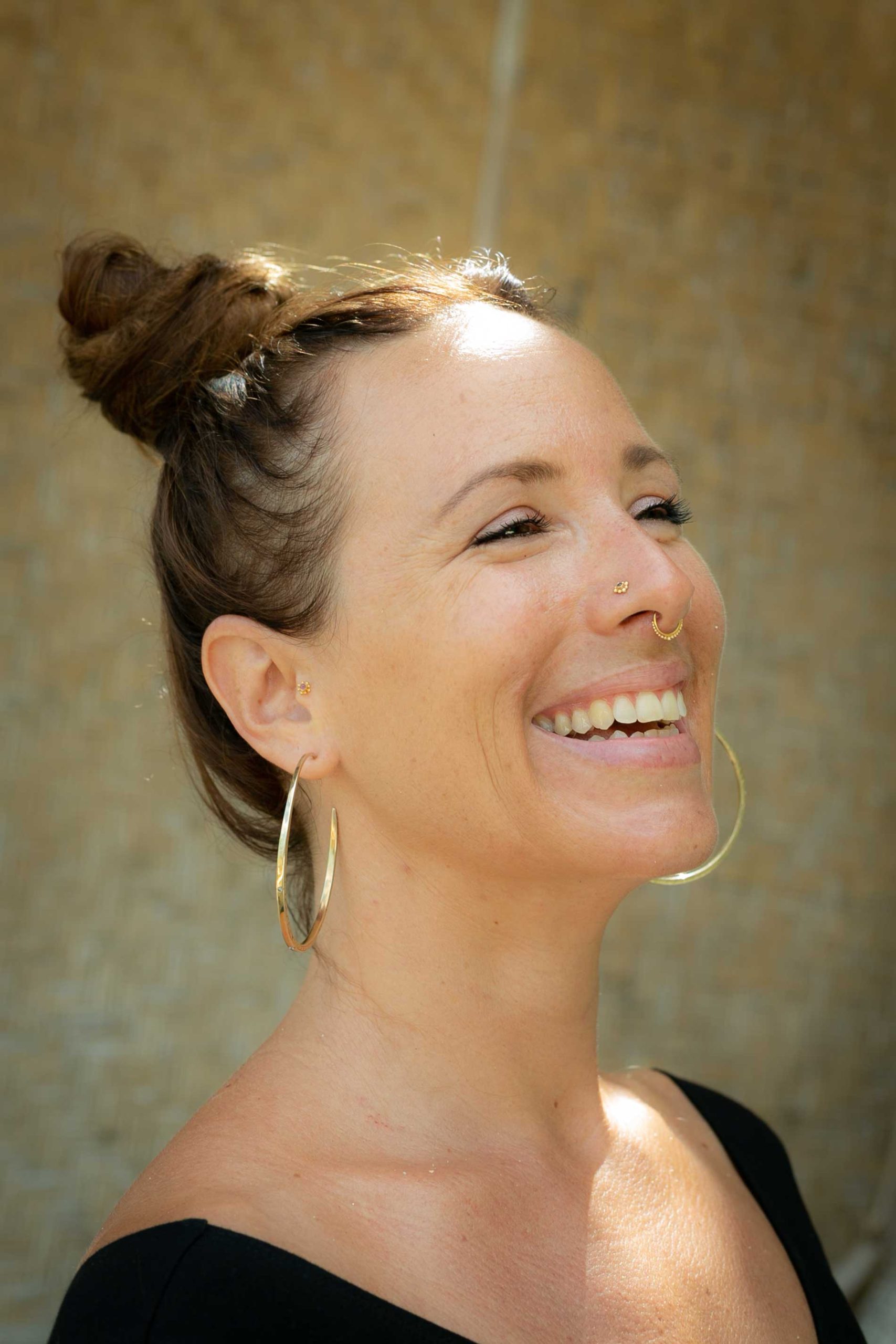
Persia Juliet is a mentor and teacher trainer with more than 18 yrs of teaching experience. Her passion for teaching is greatly influenced by meridians, chakras and energetic anatomy. While she loves a smooth sequence, her attention leans toward theming to topics such as the Deities, Chakras, Meridians and Astrology. Since her first 350hr Yoga training in 2005, Persia has furthered her education with Baron Baptiste, Les Leventhal, Ana Forrest, Sarah Powers and Jo Phee.
www.persiajuliet.com @misspersiajuliet
| Upcoming SOMA CHANDRA offerings: October 19th – 23rd at RARE Bondi Beach Australia December 11th – 17th at Alchemy Yoga Center Ubud, Bali |


